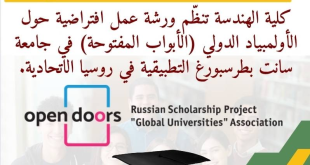M. Dr. Qaddama Mohammed Kassem, a faculty member in the Department of Oil Engineering at the Engineering Faculty of the University of Maysan, had published a scientific geometrical research, under the title: “Metal fibers-enhanced PCM thermal energy storage unit: An experimental approach on a composite roof application” in the International Journal of Thermofluids of the global publishing house ELSEVIER and included in the Scoops database in the first quarter and bearing CiteScore = 10.1 and is among the top ten journals in the research specialty.
The research addressed the possibility of improving the performance of thermal storage materials (PCM variable-phase materials) using metal fibers of galvanized steel with a weight of 10% of the weight of PCM units and two types (soft and coarse) and demonstrating their impact after being combined into a composite ceiling. To achieve this goal, four experimental ceilings were manufactured: the first sample is a benchmark for comparison, the second sample is equipped with PCM without adding fiber, whereas the third and fourth samples are equipped with metal fibers with different thicknesses (MFPCM1 and MFPCM2).
The thermal performance of the ceilings was analyzed according to the study of the maximum drop in the temperature of the roof’s inner surface, thermal attenuation coefficient and temperature delay.
The results of the research showed that the integration of soft metal fibers into the PCM unit (i.e. MFPCM1) significantly improved the thermal performance of the ceiling, with the maximum reduction in the temperature of the roof’s inner surface, attenuation coefficient and time delay reaching approximately 17%, 77.8%, and 170% compared to the reference ceiling. On the other hand, the results also showed that the ceiling with MFPCM2 unit showed lower performance than the ceiling with MFPCM1 unit, with 16.5%, 75.6%, and 150%, respectively.
Research link:
https://www.sciencedirect.com/science/article/pii/S2666202724002532

 كلية الهندسة
كلية الهندسة
